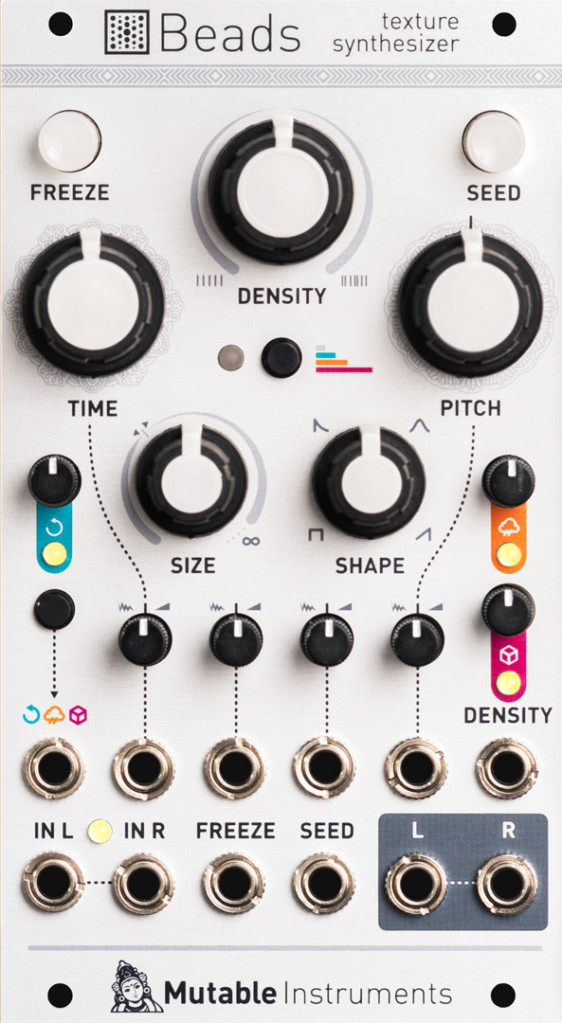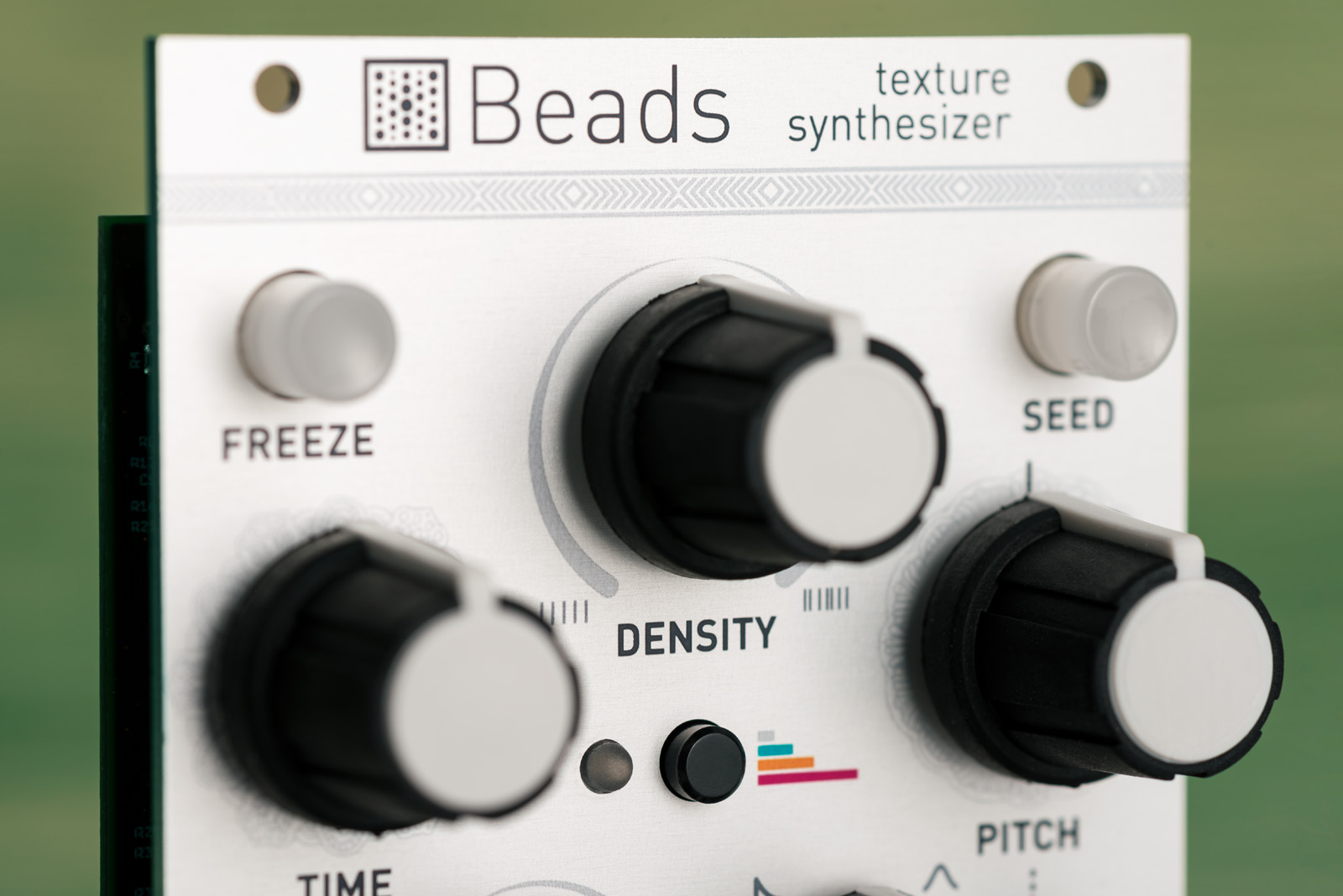Mutable Instruments’ Clouds defined granular instruments even beyond the modular world. Beads – making a surprise debut today – is a brilliant-looking follow-up, retaining the design but improving almost every element.
Far from the gear addiction of endless racks, Clouds was just at home in a tiny skiff – a module even minimalists could dive deep inside. And part of what gave it that character was undoubtedly its clear, iconic panel design.

The first clever bit about Beads is that it doesn’t change that. But as these devices are effectively tiny computers, creator Émilie Gillet has re-spec’ed the device entirely and given what she describes as hardware and software “redesigned from the ground up.”
Quick review – the basic notion is again input, granular processing, output, with live control. You have the essential controls – time, density, pitch – but also unique size and shape controls. And then what makes this so necessarily a modular instrument, everything is patchable, in a layout anyone can immediately intuit.
So what does all the new computational brainpower mean for sound capabilities? Plenty:

Sound quality gets more depth, as DSP blocks run at a faster rate. So whereas the original was distinctively lo-fi, it seems the new creation is now optimized to the point of allowing more audio-rate possibilities and timbral versatility. “Now,” you say, “that’s fine, but wouldn’t I want to be able to choose?” Well –
Character settings let you choose audio quality settings. The clever twist here is that these apply to everything – from the specs, not only sample rate and bit depth, but “clock of the converters, the amplitude limiting and saturation of the signal path, the tone of the reverb, and additional media-emulation effects.”
New control features and chaos. You can do more with triggers and clock – dividing, randomizing, and adjusting grain rate with external inputs.
There’s an attenurandomizer (a hilarious but perfect term) – basically meaning you can control the randomization and random spread with a voltage input.
Now it’s a delay, too. Perfect for those aforementioned Eurorack minimalists, you can use DENSITY, TIME, and SEED controls for controlling this not only as a conventional granular effect processor, but also other beat slicing, time-stretching, comb filtering, even tap-tempo delay, etc.
It doesn’t need an input. There are eight internal banks of wavetables.

It just all looks so deep, but – here’s the part that makes it hardware and not software – so uniquely focused.
€299 / $359.
Full details:
https://mutable-instruments.net/modules/beads/
Tom Leclerc goes in deep with an exploration, tutorial, and some lovely lovely sounds:
And the legendary Scanner shows off “no input” operation – essentially, using the wavetable sources internally rather than patching in an external audio input:
It’s not all beatless with this beauty:
You can make some other wonderful sounds with that – including using these clever quality settings (“scorched cassette,” anyone? about how many of us feel at the moment…)
Here’s an entire piece from Scanner, as well:
This on top of Blades at the end of last year, an updated dual multimode filter, and Mutable Instruments is really on a roll…